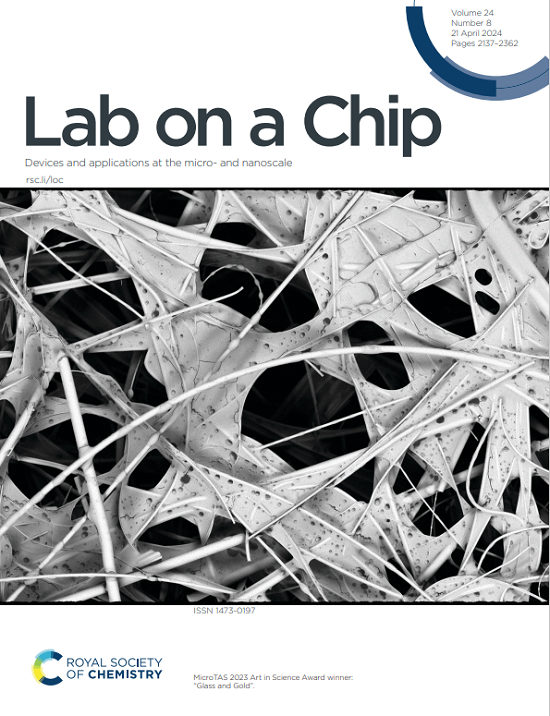用于活细胞地形操纵的可编程细胞培养芯片
IF 5.4
2区 工程技术
Q1 BIOCHEMICAL RESEARCH METHODS
引用次数: 0
摘要
生物材料表面的微观形态特征在影响细胞增殖、粘附和分化方面起着至关重要的作用。然而,表面特征调节细胞行为的潜在机制仍然没有得到充分的了解。此外,目前用于电池调节的表面设计往往过于简单,往往无法满足高精度制造和结构多功能性的双重要求。在此,我们提出了一种基于飞秒激光无掩模光学投影光刻(Fs-MOPL)技术的可编程细胞培养芯片来调节细胞行为。所制备的芯片具有较高的结构保真度和均匀性。O2等离子体表面处理和聚d -赖氨酸(PDL)涂层增强了亲水性、细胞粘附和生长。我们利用免疫荧光染色和共聚焦荧光显微镜研究了786-O细胞在不同线间距、柱直径和孔大小的支架上的迁移、粘附和形态学变化。在线性阵列结构上培养的细胞显示出细长的、定向的肌动蛋白应力纤维,而柱和孔阵列结构影响焦点粘附分布和细胞张力。生物相容性表征进一步证实了该芯片对细胞培养应用的适用性。我们的发现强调了可编程细胞培养芯片在模拟复杂的体内微环境方面的潜力,为研究细胞行为和推进生物医学研究提供了一个多功能平台。本文章由计算机程序翻译,如有差异,请以英文原文为准。
Programmable Cell Culture Chips for Topographical Manipulation of Living Cells
The micro-morphological characteristics of biomaterial surfaces play a critical role in influencing cell proliferation, adhesion, and differentiation. However, the underlying mechanisms by which surface features modulate cellular behavior remain inadequately understood. Moreover, current surface designs intended for cell regulation tend to be overly simplistic, often failing to meet the dual requirements of high-precision fabrication and structural versatility. Here, we propose a programmable cell culture chip based on femtosecond laser maskless optical projection lithography (Fs-MOPL) technology to modulate the cell behavior. The as-fabricated chip exhibits high structural fidelity and uniformity. Surface treatment with O2 plasma followed by poly-D-lysine (PDL) coating enhances hydrophilicity, cell adhesion and growth. We have investigated the migration, adhesion, and morphological changes of 786-O cells on scaffold with varied line spacing, column diameter and hole size using immunofluorescence staining and confocal fluorescence microscopy. The cells cultured on linear array structures display elongated, oriented actin stress fibers, while column and hole array structures influence focal adhesion distribution and cellular tension. Biocompatibility characterization further confirms the chip's suitability for cell culture applications. Our findings highlight the potential of programmable cell culture chips to mimic complex in vivo microenvironments, offering a multifunctional platform for studying cell behavior and advancing biomedical research.
求助全文
通过发布文献求助,成功后即可免费获取论文全文。
去求助
来源期刊

Lab on a Chip
工程技术-化学综合
CiteScore
11.10
自引率
8.20%
发文量
434
审稿时长
2.6 months
期刊介绍:
Lab on a Chip is the premiere journal that publishes cutting-edge research in the field of miniaturization. By their very nature, microfluidic/nanofluidic/miniaturized systems are at the intersection of disciplines, spanning fundamental research to high-end application, which is reflected by the broad readership of the journal. Lab on a Chip publishes two types of papers on original research: full-length research papers and communications. Papers should demonstrate innovations, which can come from technical advancements or applications addressing pressing needs in globally important areas. The journal also publishes Comments, Reviews, and Perspectives.
 求助内容:
求助内容: 应助结果提醒方式:
应助结果提醒方式:


